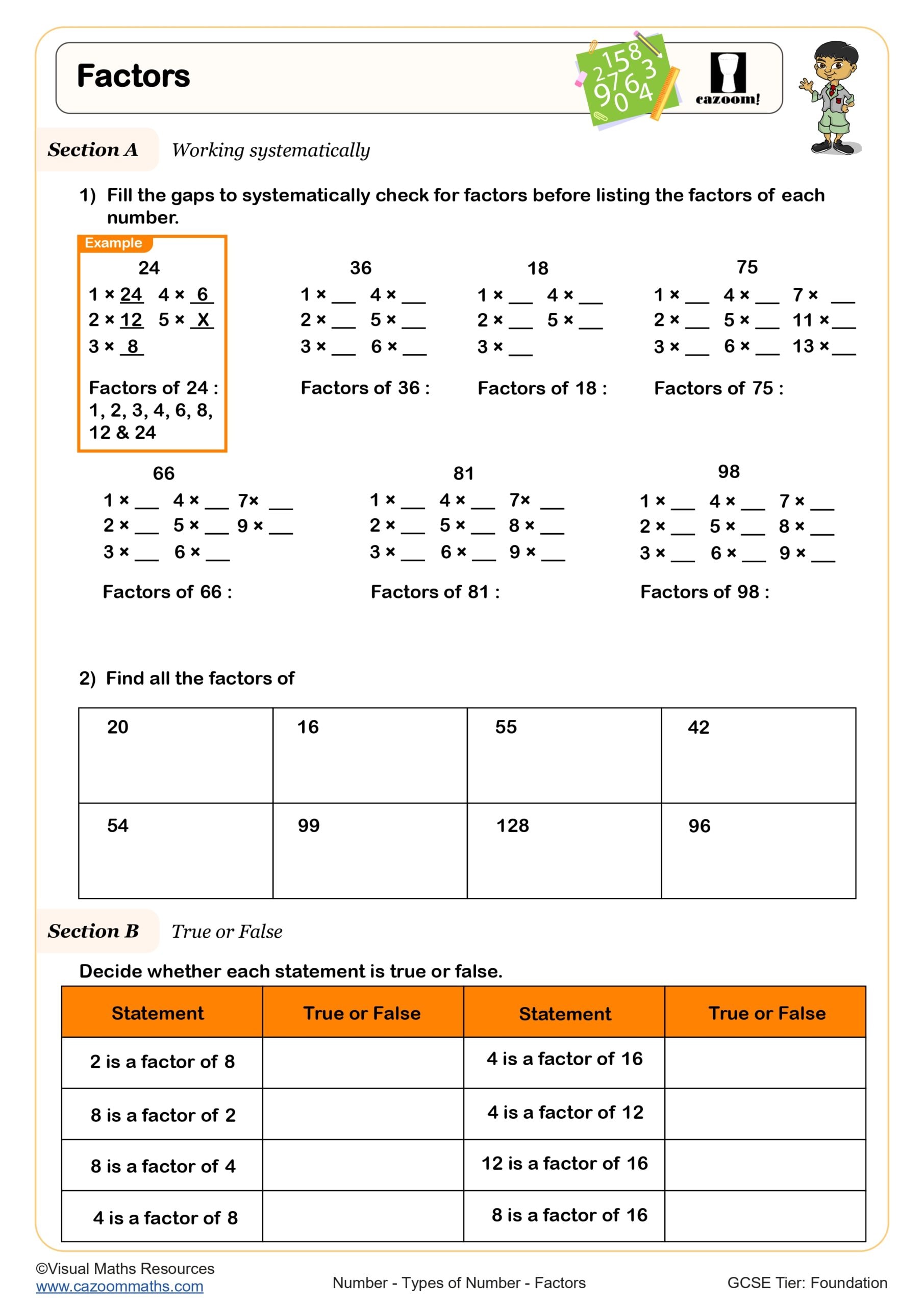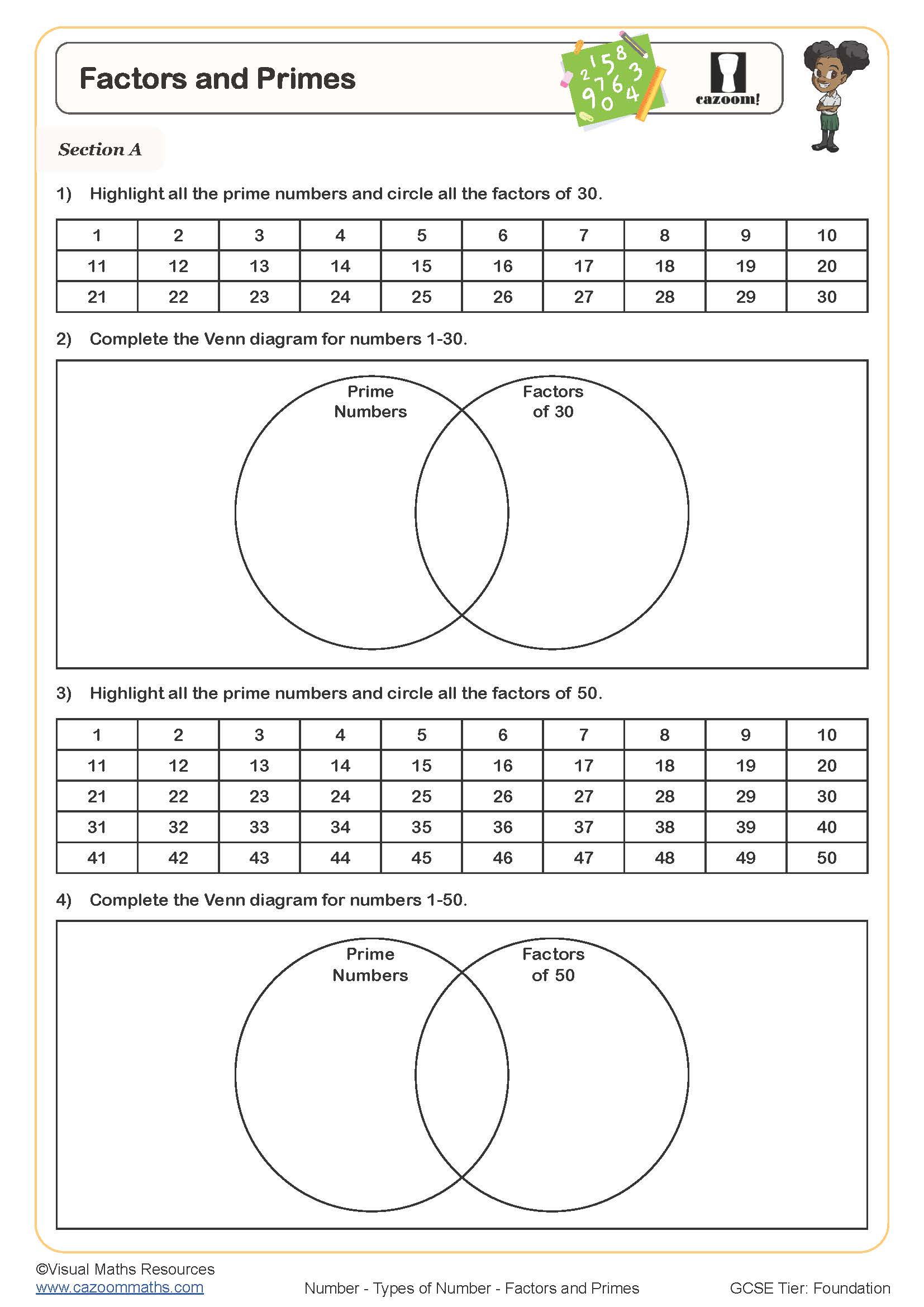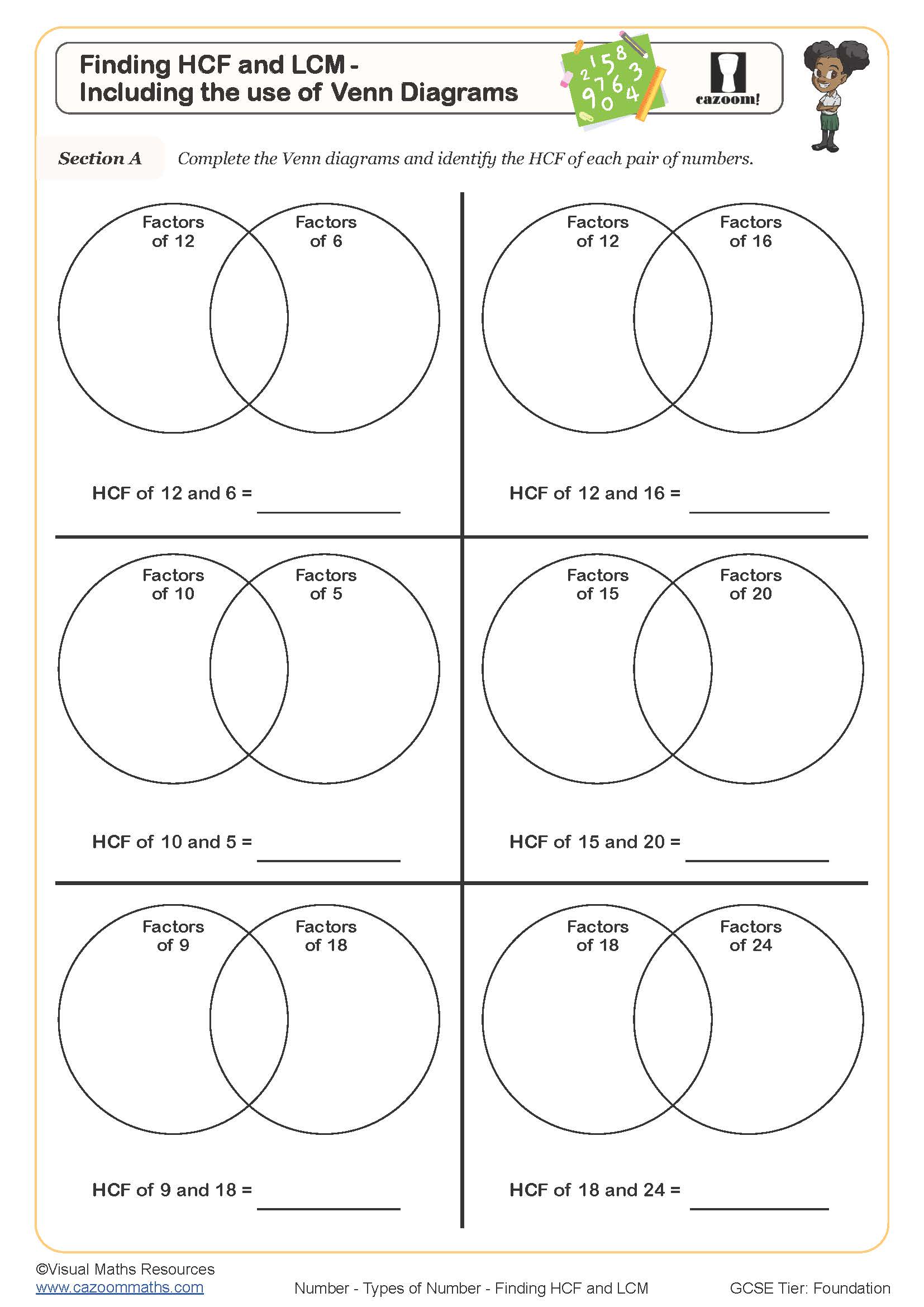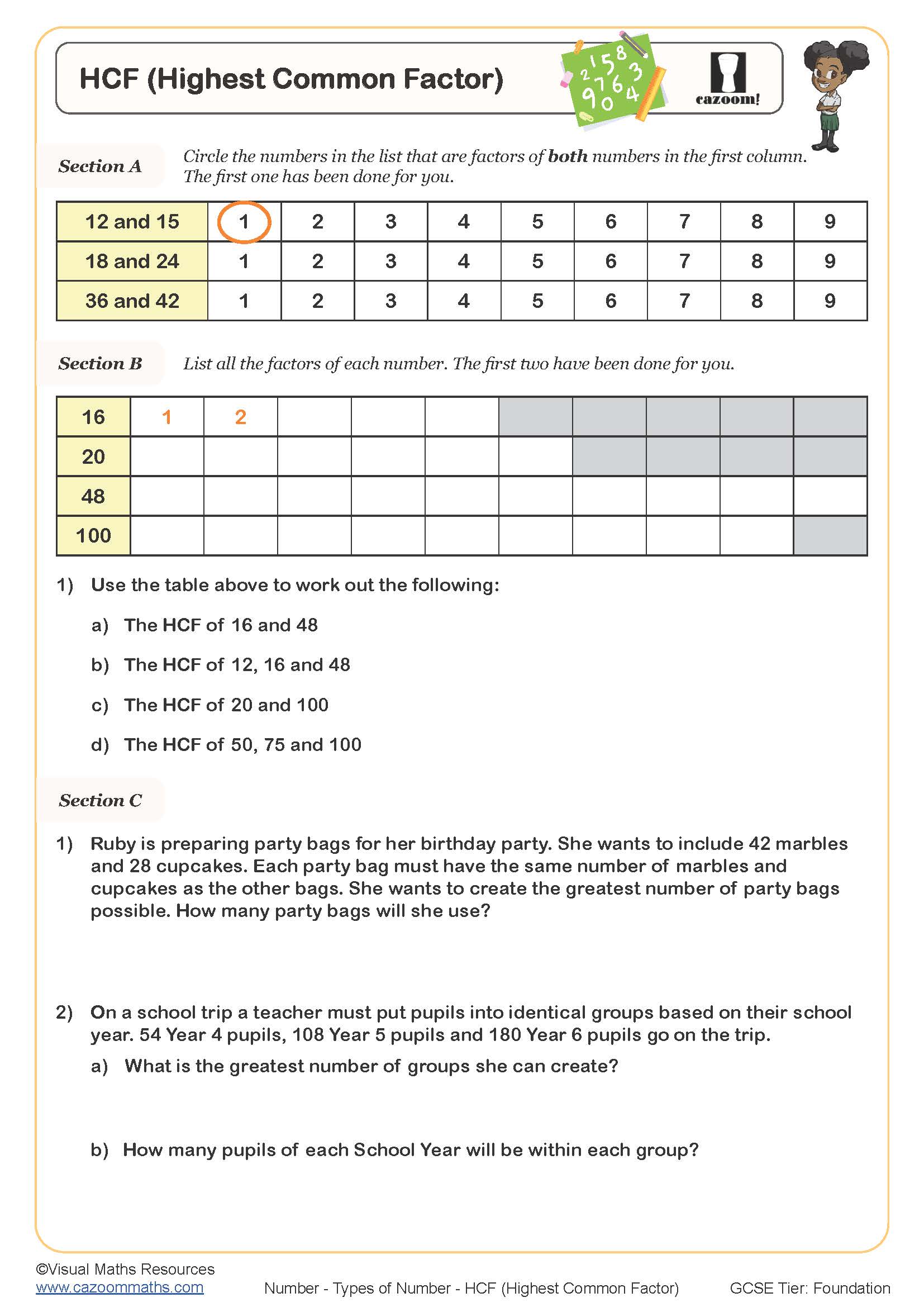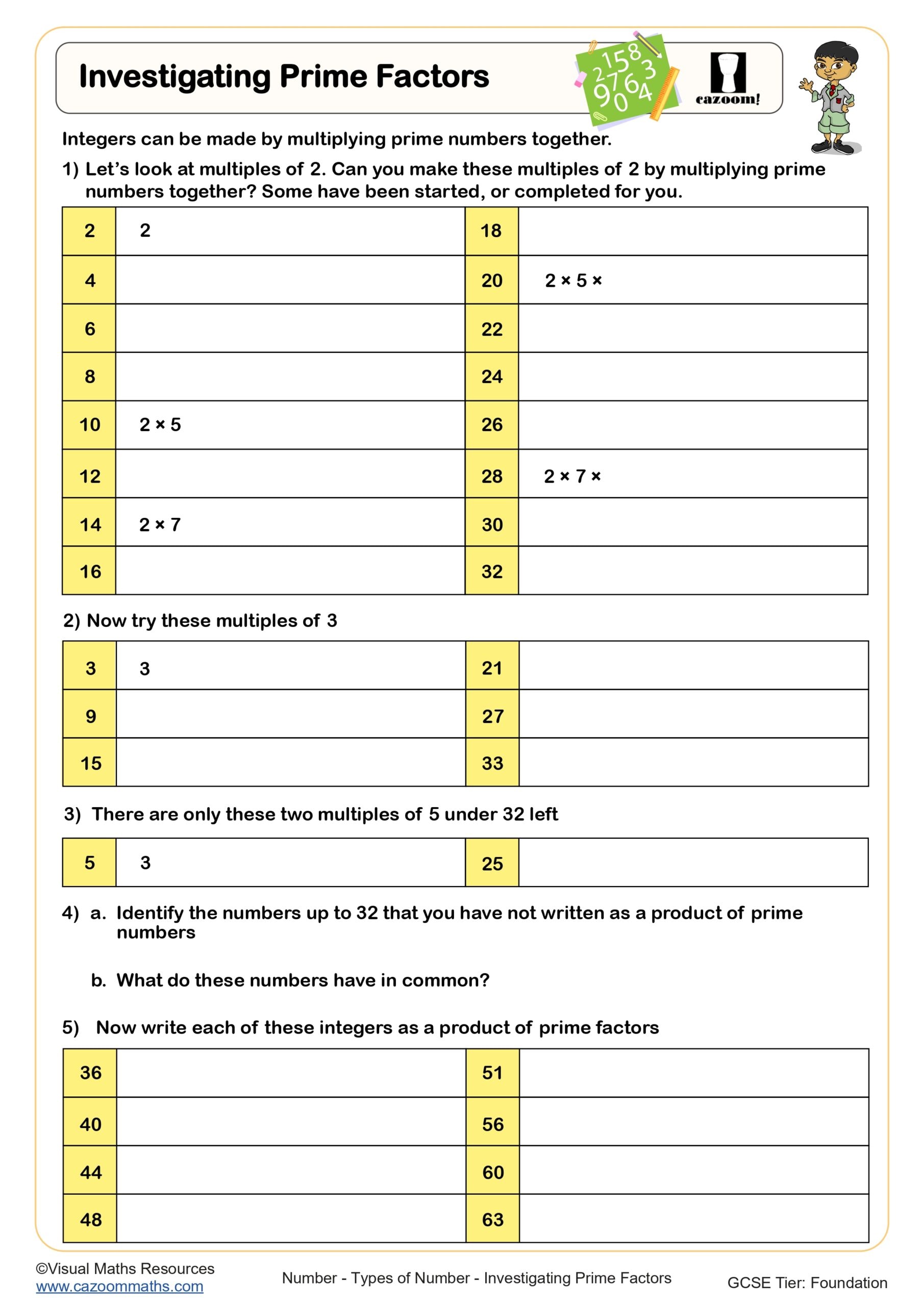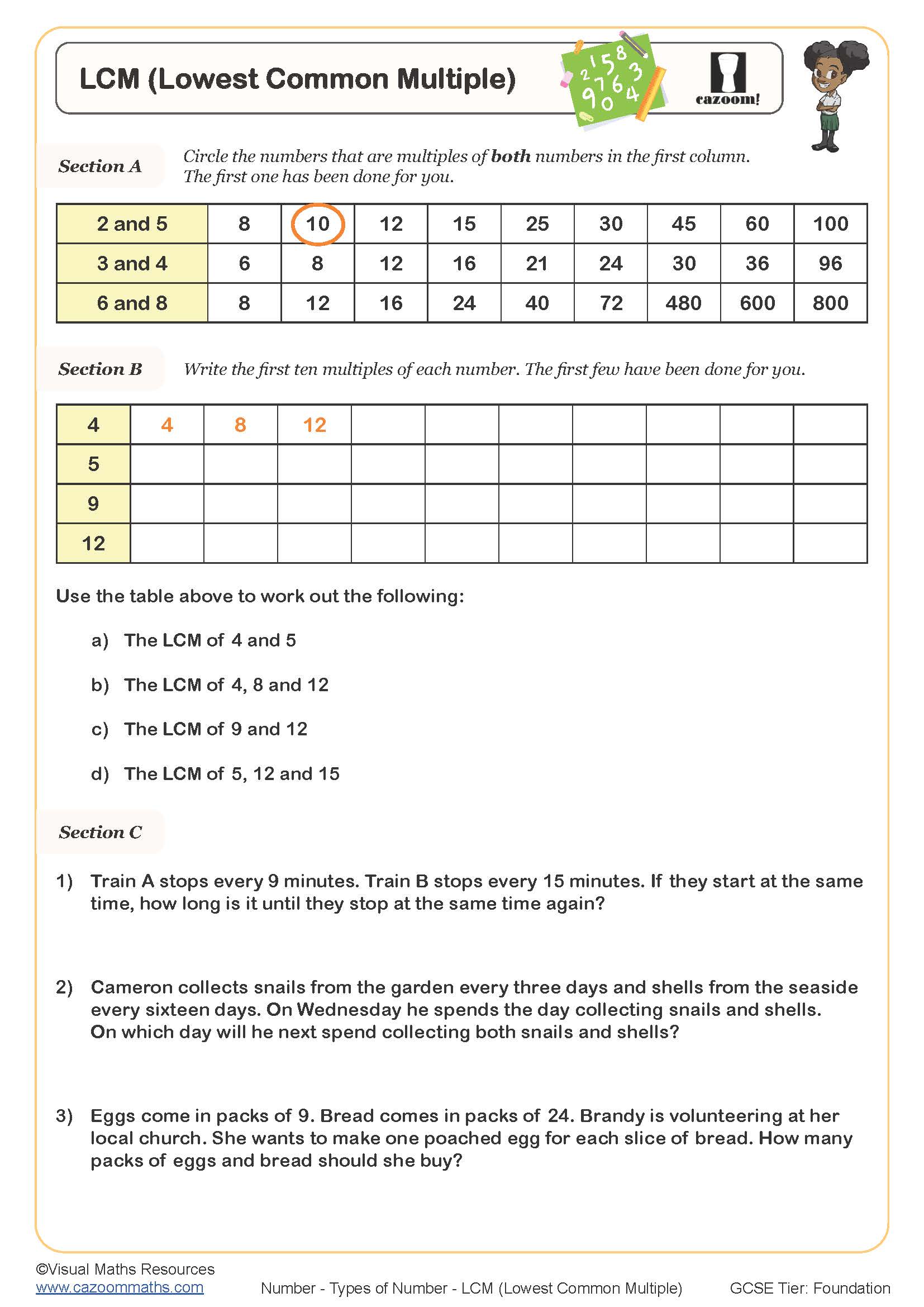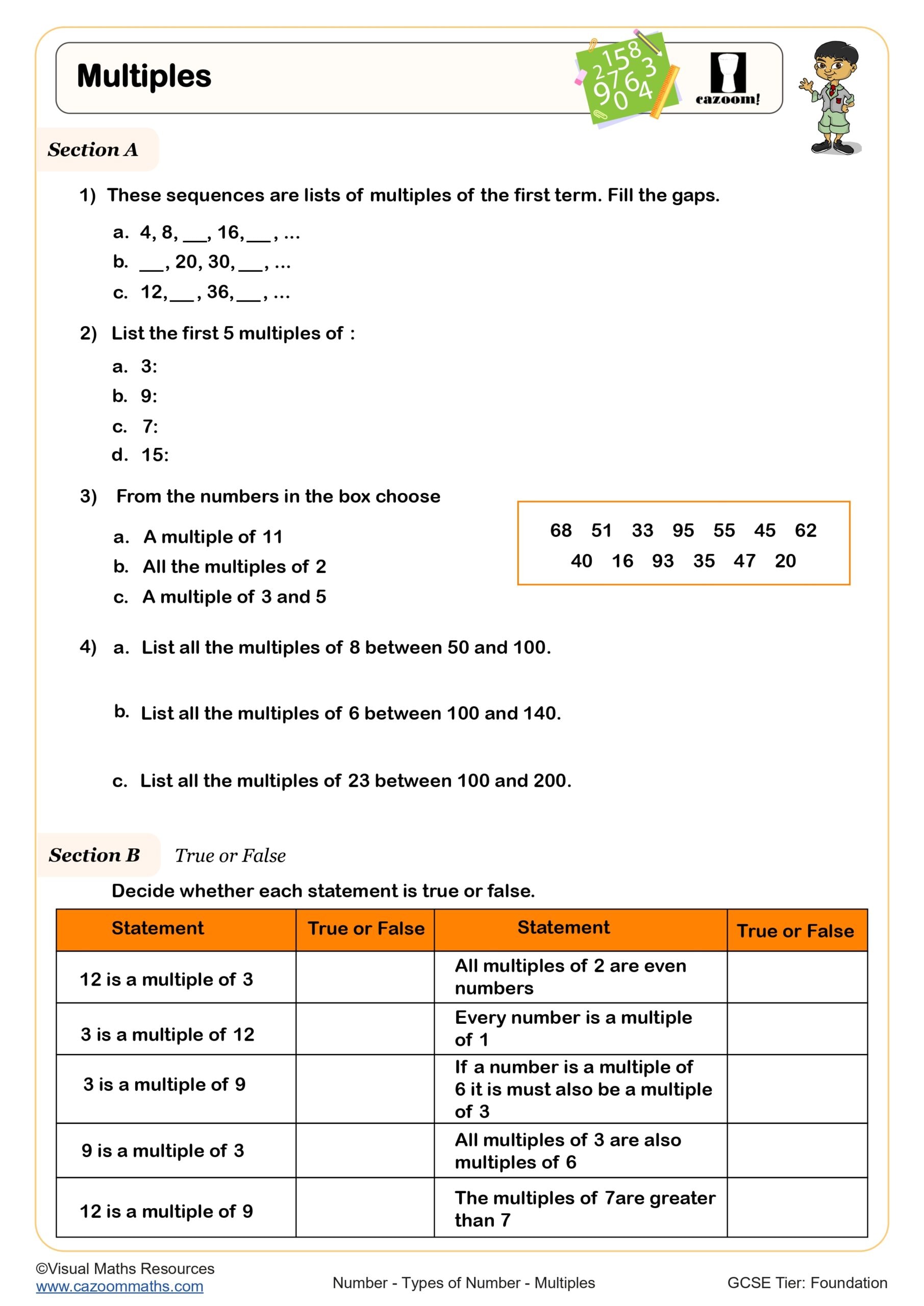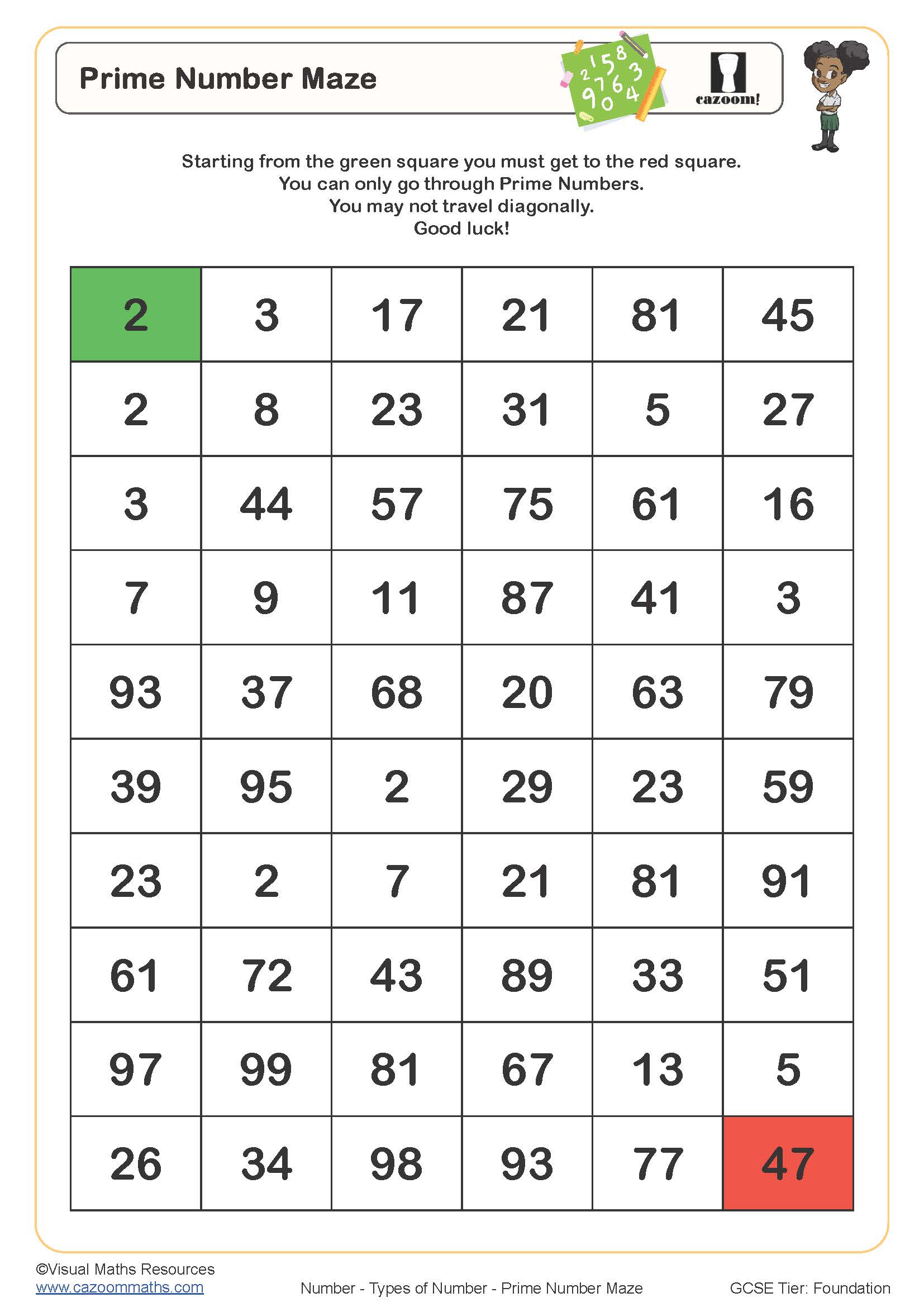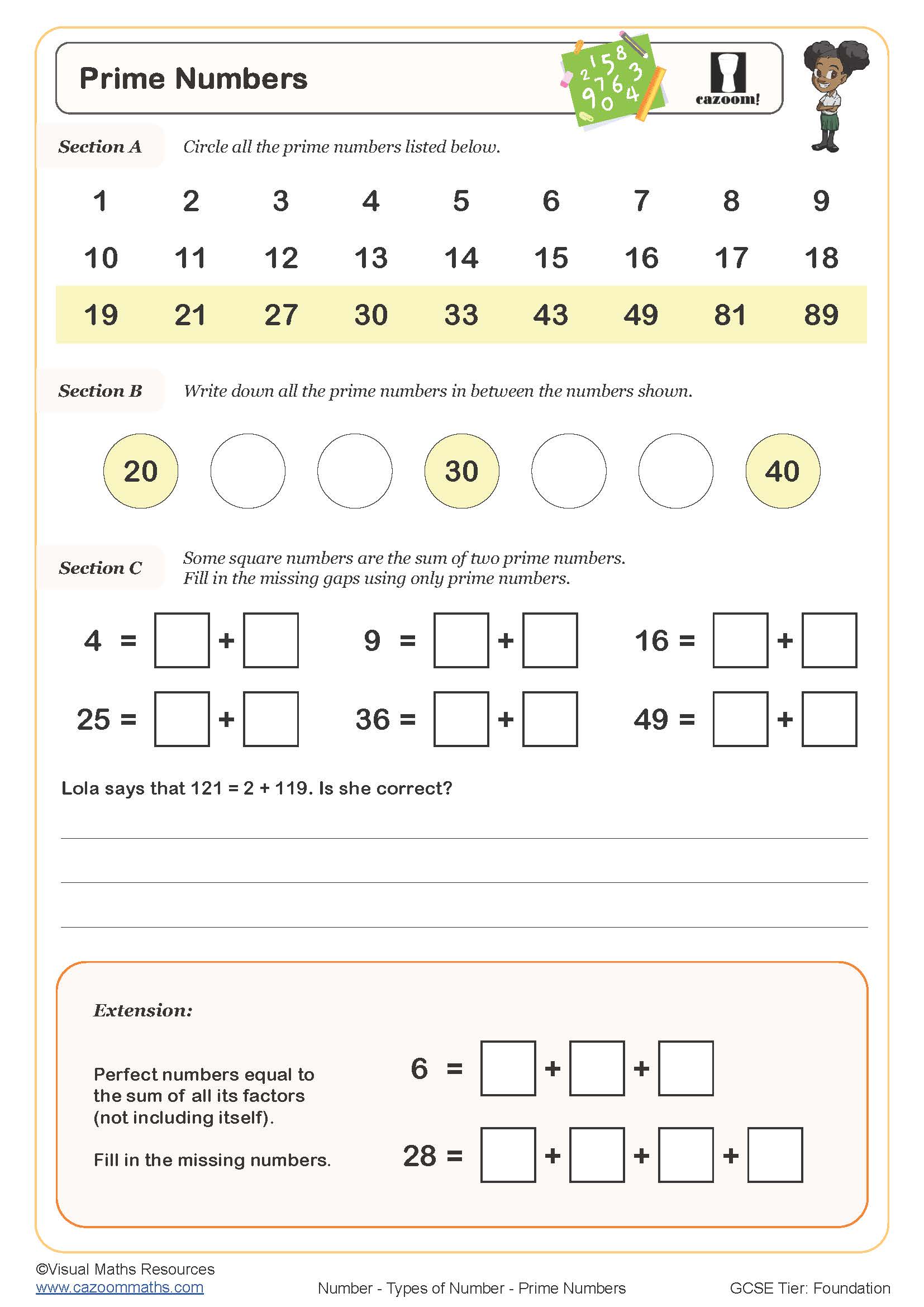Year 7 Types of Number Worksheets
Want Better Results? Use Printable Year 7 Types of Number Worksheets Today
Working with different number types enables students to transform theoretical mathematical concepts into tangible comprehension. Students learn to recognise patterns, which helps them progress from basic arithmetic to algebraic reasoning and develop problem-solving methods. The process of identifying primes followed by decomposing composite numbers builds essential neural pathways that lead to advanced mathematical understanding. The practice of these concepts on a regular basis enhances mental agility, which enables students to move between different mathematical representations with ease. The ability to switch between different mathematical representations becomes essential when students encounter multi-step problems or unfamiliar contexts in their future studies.
Specific learning benefits include:
• Masters prime factorisation techniques
• Develops systematic factor finding
• Strengthens HCF and LCM calculations
• Improves mathematical reasoning skills
• Builds algebraic thinking foundations
• Prepares for GCSE number topics
• Increases speed and accuracy
Cazoom Maths Worksheets: Complete Topic Coverage at a Glance
These worksheets scaffold learning from concrete examples to abstract reasoning, ensuring conceptual understanding develops alongside procedural fluency. Each topic introduces vocabulary and notation that become standard mathematical language throughout secondary education. The careful sequencing allows students to see connections between different number properties rather than viewing them as isolated facts.
The core skills covered include:
• Prime numbers – identifying and using properties up to 100
• Composite numbers – understanding non-prime characteristics
• Factors and multiples – finding all factors systematically
• Square and cube numbers – recognising and calculating powers
• Highest common factor – using listing and prime factorisation
• Lowest common multiple – applying to problem-solving contexts
• Index notation – writing numbers in powers efficiently
• Prime factorisation – breaking numbers into prime factors
• Number sequences – identifying patterns and rules
Do Your Pupils Struggle With Perfection? KS3 Types of Number Worksheets Can Help
The classroom implementation becomes effortless through resources which are designed for actual teaching environments. The logical sequence of exercises in each worksheet minimises explanation time so students can practice more effectively. The natural differentiation occurs through extension questions, which provide challenges for advanced learners while maintaining core exercises accessible to all students. Teachers can identify potential errors through answer keys that include common student misconceptions before these mistakes become deeply ingrained. The uniform structure of the worksheets decreases mental processing requirements so students can concentrate on mathematical content instead of deciphering instructions. The print-and-go feature of this resource helps time-constrained departments save hours of work needed to create their own materials. The Cazoom Maths worksheets integrate perfectly with current schemes of work to provide additional content that does not repeat textbook material. Supply teachers find the self-explanatory layout to be essential for maintaining learning continuity.
Practical Types of Number Examples Year 7 Students Face Daily
Number types knowledge underpins countless everyday situations, from technology to finance. Students discover practical relevance through problems connected to their experiences.
• Computer coding – binary systems use powers of two
• Music production – beat patterns involve factors and multiples
• Sports statistics – prime numbers in tournament structures
• Cryptography basics – prime numbers secure online data
• Architecture and design – factor pairs create rectangular layouts
• Shopping discounts – LCM helps compare multi-buy offers
• Gaming mechanics – probability calculations use prime factorisation
• Schedule planning – finding common time slots using LCM
